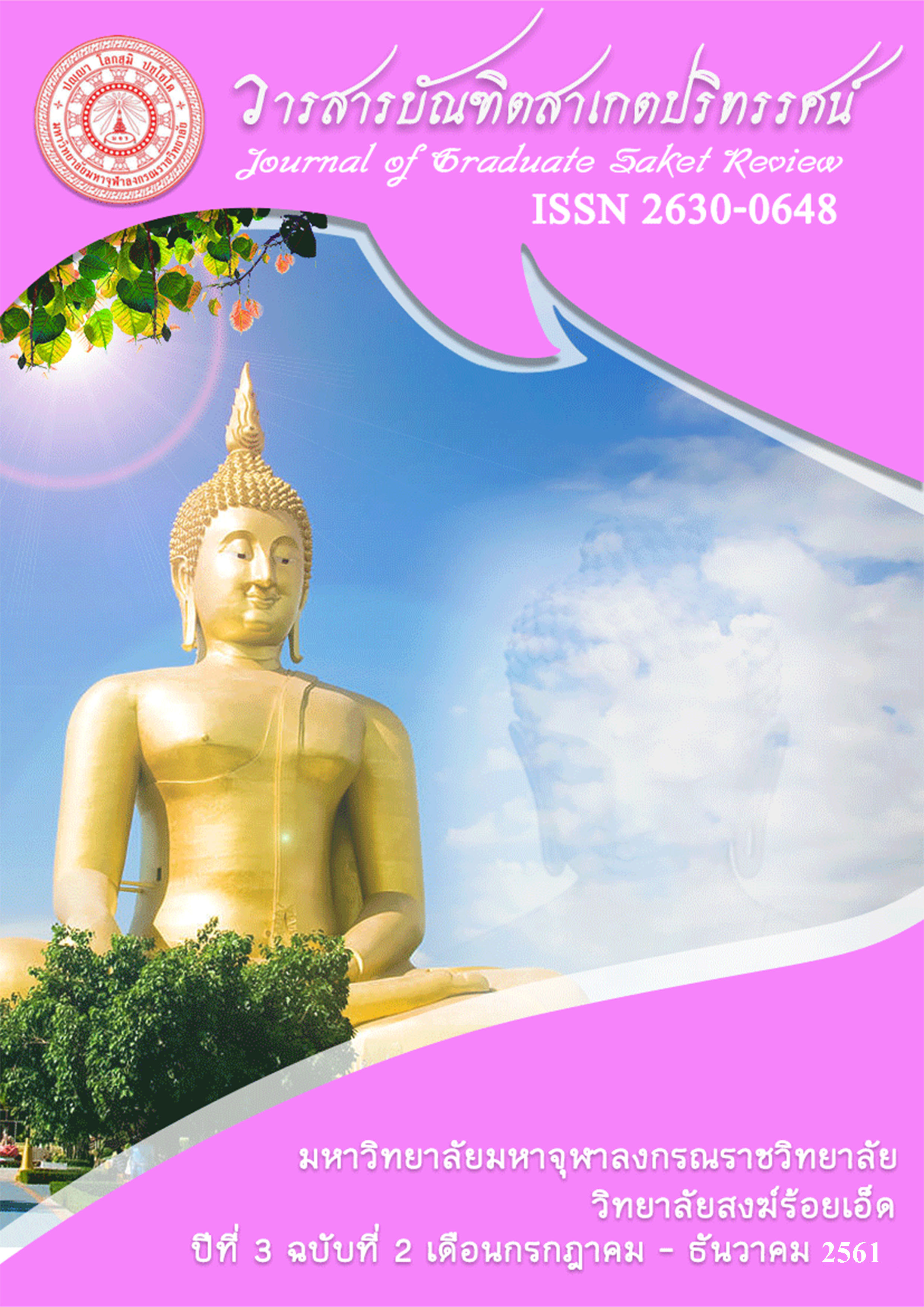การจัดการสิ่งแวดล้อมเชิงพุทธ
Main Article Content
บทคัดย่อ
พระพุทธศาสนา ได้อุบัติขึ้นมาเป็นเวลา 2,500กว่าปีแล้ว เดิมที่เดียว พระพุทธศาสนานั้น จะเน้นเรื่องเกี่ยวกับการแสวงหาวิธีกำจัดความทุกข์ของมนุษย์เพียงอย่างเดียว แต่ยังมีหลักคำสอนเกี่ยวกับการปฏิบัติต่อสิ่งแวดล้อมจะเห็นได้ว่าพระพุทธเจ้าและพระสาวกส่วนมากใช้ชีวิตใกล้ชิดกับธรรมชาติอย่างแนบแน่นเป็นอันหนึ่งอันเดียวกัน ไม่เคยปรากฏหลักฐานใด ๆ การช่วงชิงทรัพยากรอันอุดมสมบูรณ์มาสร้างประโยชน์ในทางวัตถุเพื่อตอบสนองความต้องการตนเอง แต่ในทางตรงกันข้ามกลับซาบซึ้งในคุณค่าของธรรมชาติและมีจิตใจที่จะอนุรักษ์สิ่งแวดล้อมจะมีพระสูตรและวินัยเกี่ยวกับการอนุรักษ์สิ่งแวดล้อม 1) ปโลกสูตร 2) เวสสันดรชาดก และวินัย 1 ) ส่งเสริมการอนุรักษ์ดินและน้ำ 2)ส่งเสริมการอนุรักษ์พืชและป่าไม้และพระวินัย
Article Details
เนื้อหาและข้อมูลในบทความที่ลงตีพิมพ์ในวารสารบัณฑิตสาเกตปริทรรศน์ ถือเป็นข้อคิดเห็นและความรับผิดชอบของผู้เขียนบทความโดยตรงซึ่งกองบรรณาธิการวารสาร ไม่จำเป็นต้องเห็นด้วย หรือร่วมรับผิดชอบใด ๆบทความ ข้อมูล เนื้อหา รูปภาพ ฯลฯ ที่ได้รับการตีพิมพ์ในวารสารบัณฑิตสาเกตปริทรรศน์ ถือเป็นลิขสิทธิ์ของวารสารบัณฑิตสาเกตปริทรรศน์ หากบุคคลหรือหน่วยงานใดต้องการนำทั้งหมดหรือส่วนหนึ่งส่วนใดไปเผยแพร่ต่อหรือเพื่อกระทำการใด ๆ จะต้องได้รับอนุญาตเป็นลายลักอักษรจากวารสารบัณฑิตสาเกตปริทรรศน์ ก่อนเท่านั้น
เอกสารอ้างอิง
________. (2539). พระไตรปิฎกภาษาไทย ฉบับ มหาจุฬาลงกรณราชวิทยาลัย เฉลิมพระเกียรติสมเด็จพระนางเจ้าสิริกิติ์ พระบรมราชินีนาถ. กรุงเทพฯ : มหาจุฬาลงกรณราชวิทยาลัย.
มหามกุฏราชวิทยาลัย. (2539). พระไตรปิฎกพร้อมอรรถกถาแปล ชุด 91 เล่ม. กรุงเทพฯ: โรงพิมพ์มหามกุฏราชวิทยาลัย.
พระธรรมปิฎก (ป.อ. ปยุตฺโต). (2542). การพัฒนาที่ยั่งยืน. พิมพ์ครั้งที่6. กรุงเทพฯ: สำนักพิมพ์มูลนิธิโกมลคีมทอง.
พระมหาวิเศษ ปญฺญาวชิโร. (2553). พุทธศาสนากับการอนุรักษ์ป่าไม้. วิทยานิพนธ์ศาสนศาสตรมหาบัณฑิต. บัณฑิตวิทยาลัย มหาวิทยาลัยมหามกุฎราชวิทยาลัย.
Leopold, A. (2015). The Land Ethics in a Sand Almanac County. New York: Ballantine Books.1 September.


